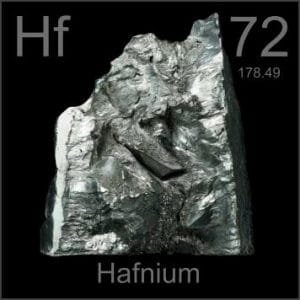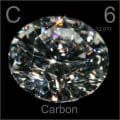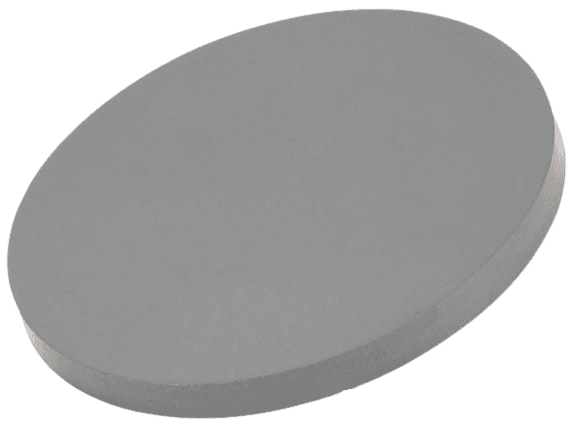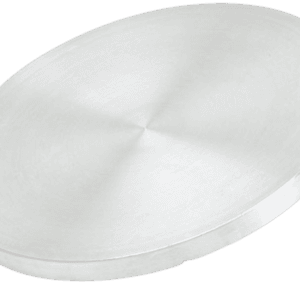Hafnium Carbide Sputtering Target Description
Hafnium is a lustrous, silvery-gray transition metal known for its strong resemblance to zirconium, often found in zirconium minerals. Predicted by Dmitri Mendeleev in 1869, hafnium was identified much later, in 1923, by Dirk Coster and George de Hevesy, marking it as the last stable element to be discovered. The element is named after “Hafnia,” the Latin name for Copenhagen, where it was discovered. Hafnium is characterized by its high melting point, corrosion resistance, and use in nuclear reactors and high-temperature alloys.

Related Product: Hafnium Sputtering Target
 Carbon is a fundamental chemical element, symbolized by “C,” with its name derived from the Latin word ‘carbo,’ meaning charcoal. Known and utilized as early as 3750 BC by ancient Egyptians and Sumerians, carbon is essential in many aspects of life and technology. It has an atomic number of 6, placing it in Period 2 and Group 14 of the periodic table, within the p-block. The relative atomic mass of carbon is approximately 12.0107, with a slight uncertainty indicated by the number in parentheses. Carbon’s versatility and unique chemical properties make it a crucial component in organic chemistry, materials science, and various industrial applications.
Carbon is a fundamental chemical element, symbolized by “C,” with its name derived from the Latin word ‘carbo,’ meaning charcoal. Known and utilized as early as 3750 BC by ancient Egyptians and Sumerians, carbon is essential in many aspects of life and technology. It has an atomic number of 6, placing it in Period 2 and Group 14 of the periodic table, within the p-block. The relative atomic mass of carbon is approximately 12.0107, with a slight uncertainty indicated by the number in parentheses. Carbon’s versatility and unique chemical properties make it a crucial component in organic chemistry, materials science, and various industrial applications.
Hafnium Carbide Sputtering Target Specification
| Compound Formula | HfC |
| Molecular Weight | 190.5 |
| Appearance | Black |
| Melting Point | 3,900° C |
| Boiling Point | N/A |
| Density | 12.20 g/cm3 |
Hafnium Carbide Sputtering Target Application
The hafnium carbide sputtering target is widely utilized in various applications, including thin film deposition, decoration, and the semiconductor industry. It is also used in displays, LEDs, and photovoltaic devices. Additionally, it plays a significant role in functional coatings and the optical information storage industry. The material is commonly applied in glass coating, such as for car and architectural glass, as well as in optical communication technologies. Its versatility and durability make it a valuable component in these high-performance applications.
Hafnium Carbide Sputtering Target Packaging
Our hafnium carbide sputtering targets are meticulously tagged and labeled externally to ensure clear identification and effective quality control. We take great care in handling and packaging these targets to prevent any potential damage during storage or transportation, thereby maintaining the quality and integrity of the product throughout the process.





Reviews
There are no reviews yet.